Related Research Articles

The Cradle of Humankind is a paleoanthropological site that is located about 50 km (31 mi) northwest of Johannesburg, South Africa, in the Gauteng province. Declared a World Heritage Site by UNESCO in 1999, the site is home to the largest known concentration of human ancestral remains anywhere in the world. The site currently occupies 47,000 hectares (180 sq mi) and contains a complex system of limestone caves. The registered name of the site in the list of World Heritage Sites is Fossil Hominid Sites of South Africa.

Sterkfontein is a set of limestone caves of special interest in paleoanthropology located in Gauteng province, about 40 kilometres (25 mi) northwest of Johannesburg, South Africa in the Muldersdrift area close to the town of Krugersdorp. The archaeological sites of Swartkrans and Kromdraai are in the same area. Sterkfontein is a South African National Heritage Site and was also declared a World Heritage Site in 2000. The area in which it is situated is known as the Cradle of Humankind. The Sterkfontein Caves are also home to numerous wild African species including Belonogaster petiolata, a wasp species of which there is a large nesting presence.

Kebara Cave is a limestone cave locality in Wadi Kebara, situated at 60 to 65 m above sea level on the western escarpment of the Carmel Range, in the Ramat HaNadiv preserve of Zichron Yaakov.
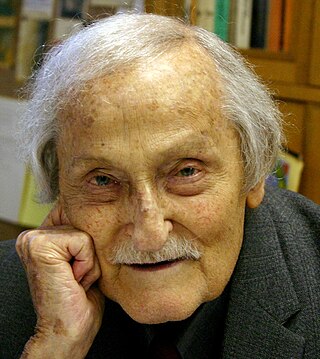
Phillip Vallentine Tobias was a South African palaeoanthropologist and Professor Emeritus at the University of the Witwatersrand in Johannesburg. He was best known for his work at South Africa's hominid fossil sites. He was also an activist for the eradication of apartheid and gave numerous anti-apartheid speeches at protest rallies and also to academic audiences.

Ronald John Clarke is a paleoanthropologist most notable for the discovery of "Little Foot", an extraordinarily complete skeleton of Australopithecus, in the Sterkfontein Caves. A more technical description of various aspects of his description of the Australopithecus skeleton was published in the Journal of Quaternary Science.
Charles Kimberlin Brain, also known as C. K. "Bob" Brain, was a South African paleontologist who studied and taught African cave taphonomy for more than fifty years.

Lee Rogers Berger is an American-born South African paleoanthropologist and National Geographic Explorer-in-Residence. He is best known for his discovery of the Australopithecus sediba type site, Malapa; his leadership of Rising Star Expedition in the excavation of Homo naledi at Rising Star Cave; and the Taung Bird of Prey Hypothesis.
Gladysvale Cave is a fossil-bearing breccia filled cave located about 13 kilometres (8.1 mi) northeast of the well-known South African hominid-bearing sites of Sterkfontein and Swartkrans and about 45 kilometres (28 mi) north-northwest of Johannesburg, South Africa. It is situated within the Cradle of Humankind World Heritage Site and is itself a South African National Heritage Site.
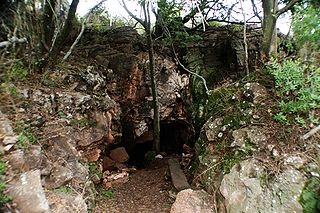
Plovers Lake Cave is a fossil-bearing breccia-filled cavity in South Africa. The cave is located about 4 km southeast of the well-known South African hominid-bearing sites of Sterkfontein and Kromdraai and about 36 km northwest of Johannesburg. Plovers Lake has been declared a South African National Heritage Site.

Malapa is a fossil-bearing cave located about 15 kilometres (9.3 mi) northeast of the well known South African hominid-bearing sites of Sterkfontein and Swartkrans and about 45 kilometres (28 mi) north-northwest of Johannesburg, South Africa. It is situated within the Cradle of Humankind World Heritage Site.
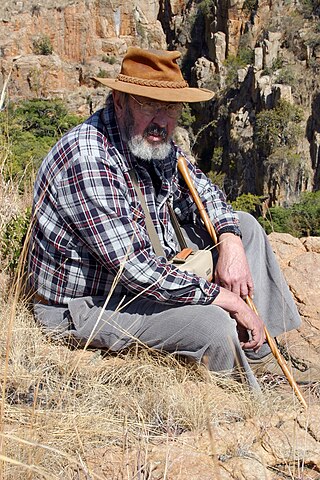
André Werner Keyser, was a South African palaeontologist and geologist noted for his discovery of the Drimolen hominid site and of numerous hominid remains.
The Rising Star cave system is located in the Malmani dolomites, in Bloubank River valley, about 800 meters southwest of Swartkrans, part of the Cradle of Humankind World Heritage Site in South Africa. Recreational caving has occurred there since the 1960s. In 2015, fossils found there two years prior were determined to be a previously unknown extinct species of hominin named Homo naledi.

The Mladečské Caves are a cave complex in the municipality of Mladeč in the Czech Republic. It is located in the Třesín National Nature Monument within the Litovelské Pomoraví Protected Landscape Area.

Dawn of Humanity is a 2015 American documentary film that was released online on September 10, 2015, and aired nationwide in the United States on September 16, 2015. The PBS NOVA National Geographic film, in one episode of two hours, was directed and produced by Graham Townsley. The film describes the 2013 discovery, and later excavation, of the fossil remains of Homo naledi, an extinct species of hominin assigned to the genus Homo, found within the Dinaledi Chamber of the Rising Star Cave system, located in the Cradle of Humankind, South Africa. Additionally, the National Geographic Society has multiple videos on its website covering different phases of the discovery and excavation of the fossils during a two-year period. As of September 2015, fossils of at least fifteen individuals, amounting to 1550 specimens, have been excavated from the cave.

The Underground Astronauts is the name given to a group of six scientists, Hannah Morris, Marina Elliott, Becca Peixotto, Alia Gurtov, K. Lindsay Hunter, and Elen Feuerriegel, who excavated the bones of Homo naledi from the Dinaledi Chamber of the Rising Star cave system in Gauteng, South Africa. The six women were selected by the expedition leader, Lee Rogers Berger, who posted a message on Facebook asking for scientists with experience in paleontological excavations and caving, and were slender enough for cramped spaces. Within ten days of the post, Berger had received almost sixty applicants and chose six scientists to make up his expedition team.
Elen Feuerriegel is an Australian palaeoanthropologist, known for being one of the "underground astronauts" of the Rising Star Expedition. She is also a clinical research scientist at the University of Colorado Denver where she specialises in COVID-19 AND HIV clinical trials.
Alia Gurtov is an American paleoanthropologist who is known for being one of the six Underground Astronauts of the Rising Star Expedition.

Rebecca (Becca) Peixotto is an American archaeologist who is best known for her contribution to the Rising Star Expedition as one of the six Underground Astronauts, a group of scientists tasked with excavating the Rising Star Cave System. She has also participated in the Great Dismal Swamp Landscape Study and is an experienced wilderness educator.
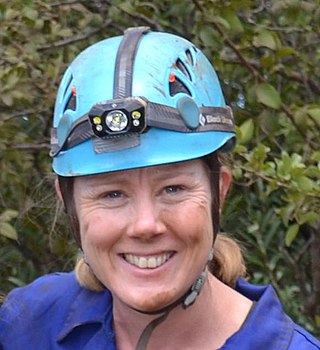
Marina Elliott is a Canadian biological anthropologist, who is known for being one of the six Underground Astronauts of the Rising Star Expedition.
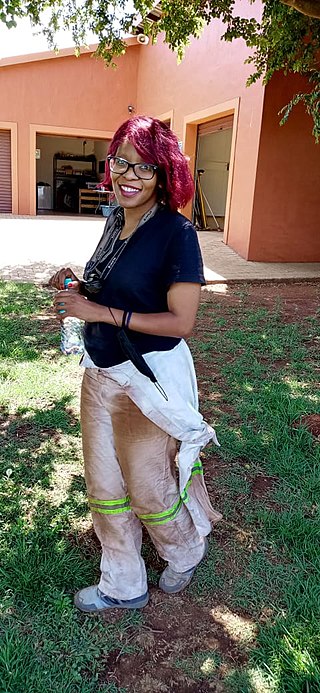
Keneiloe Molopyane is a South African biological archaeologist and paleoanthropologist. As of 2023 she was lead excavator at Rising Star Cave and is a researcher at Centre for Exploration of the Deep Human Journey at the University of the Witwatersrand. She was named an "emerging explorer" by the National Geographic Society and an invited member of 50 Club Explorers.
References
- 1 2 3 4 Schupska, Stephanie (11 September 2015). "Catch a Rising Star". University of Georgia. Retrieved 10 December 2017.
- 1 2 Yong, Ed (10 September 2015). "6 Tiny Cavers, 15 Odd Skeletons, and 1 Amazing New Species of Ancient Human". The Atlantic. Retrieved 8 December 2017.
- ↑ Feltman, Rachel. "Meet the six female 'underground astronauts' who recovered our newest relative". Washington Post. Retrieved 8 December 2017.
- 1 2 "The Underground Astronaut". College of Arts and Sciences. Ohio State University. 27 April 2016. Retrieved 10 December 2017.
- ↑ Shreeve, James. "This Face Changes the Human Story. But How?". National Geographic. Archived from the original on September 10, 2015. Retrieved 8 December 2017.
- ↑ Mathy, MH (13 October 2015). "Shining Light of Discovery". The Clarion. Madison Area Technical College. Retrieved 7 December 2017.
- ↑ "Ali Gurtov '07 Is One of The Rising Star Expedition's "Underground Astronauts"". Wellesley College. Retrieved 8 December 2017.